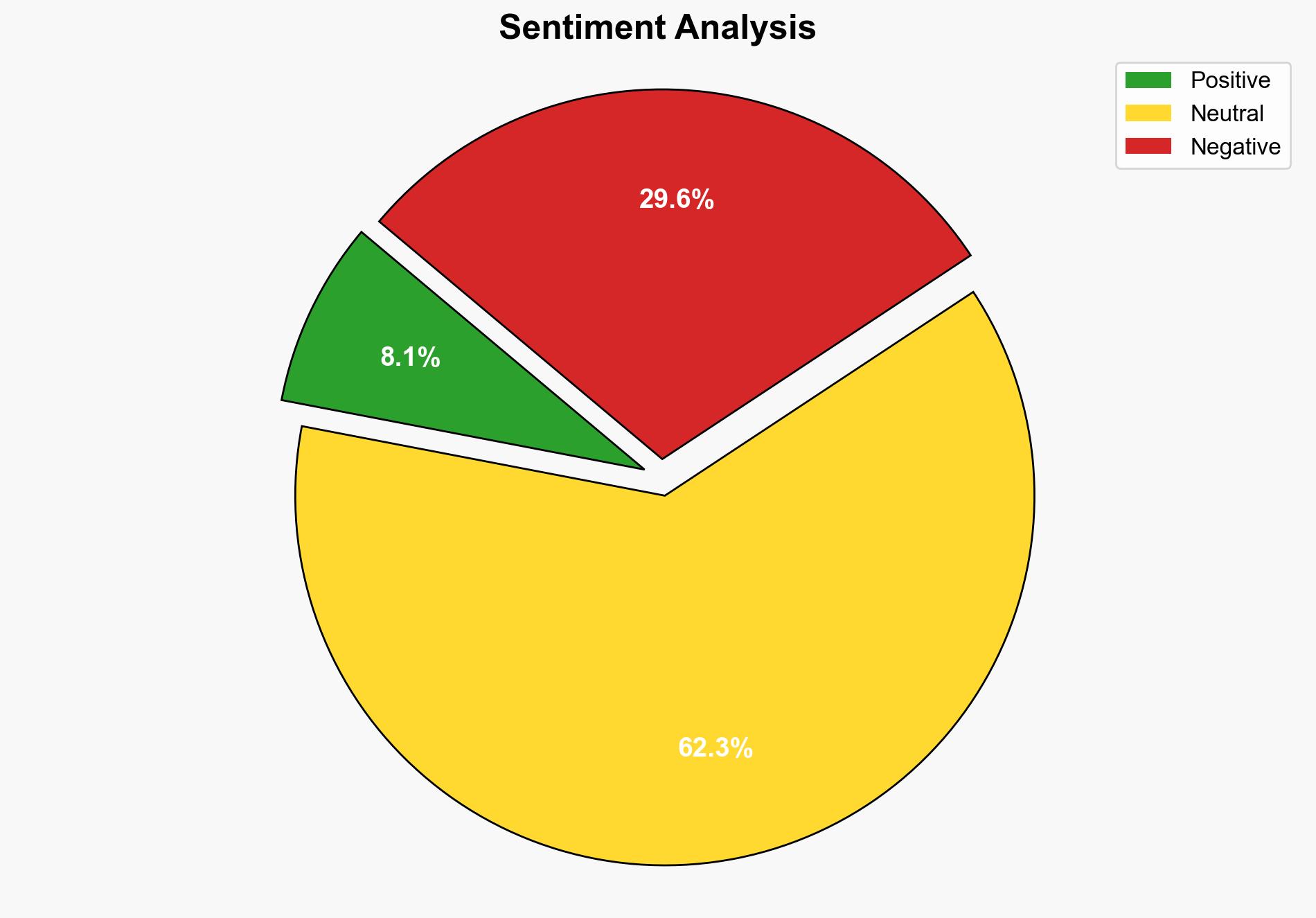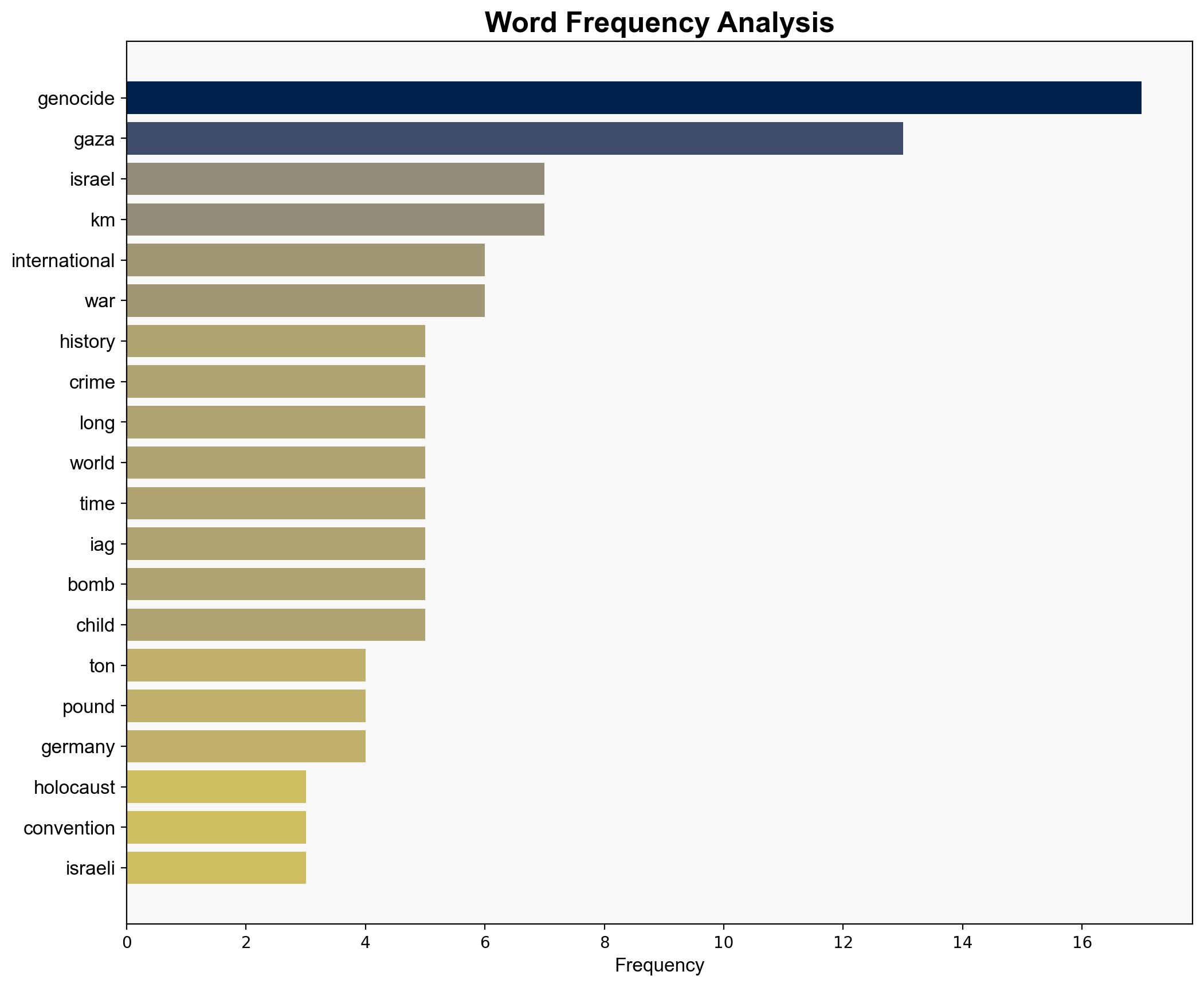Crying Antisemite to Shield Israeli Genocide and Mass Murder – CounterPunch
Published on: 2025-09-09
Intelligence Report: Crying Antisemite to Shield Israeli Genocide and Mass Murder – CounterPunch
1. BLUF (Bottom Line Up Front)
The analysis of the source text suggests two primary hypotheses regarding the situation in Gaza as described. The most supported hypothesis is that the actions in Gaza meet the criteria of genocide as per international definitions, with a high confidence level due to the alignment of multiple expert opinions and historical data. It is recommended to increase diplomatic pressure and international oversight to prevent further escalation and ensure humanitarian aid access.
2. Competing Hypotheses
1. **Hypothesis 1**: The actions of Israel in Gaza constitute genocide, as defined by the International Association of Genocide Scholars (IAG) and supported by international legal bodies. This interpretation is based on the scale of destruction, targeting of civilians, and the systematic nature of the attacks.
2. **Hypothesis 2**: The situation in Gaza, while severe, does not meet the legal definition of genocide but represents a complex military conflict with significant humanitarian consequences. This view may consider the context of ongoing hostilities and security concerns.
Using the Analysis of Competing Hypotheses (ACH) 2.0, Hypothesis 1 is better supported due to the convergence of multiple credible sources and the legal framework provided by international bodies.
3. Key Assumptions and Red Flags
– **Assumptions**: Hypothesis 1 assumes that the definitions and declarations by international bodies are unbiased and comprehensive. Hypothesis 2 assumes that the military actions are primarily defensive and not systematically targeting civilians.
– **Red Flags**: Potential bias in the source material, as it may reflect a particular political stance. The lack of direct evidence from neutral observers on the ground is a significant blind spot.
– **Inconsistent Data**: Discrepancies in casualty figures and damage assessments could indicate data manipulation or selective reporting.
4. Implications and Strategic Risks
– **Geopolitical Risks**: Escalation of the conflict could destabilize the region further, drawing in neighboring countries and complicating international relations.
– **Economic Impact**: Prolonged conflict may disrupt trade routes and impact global markets, particularly in energy and commodities.
– **Psychological Impact**: Continued violence may radicalize populations and increase recruitment for extremist groups.
– **Cybersecurity Threats**: Increased cyber warfare activities targeting critical infrastructure in the region and beyond.
5. Recommendations and Outlook
- **Diplomatic Engagement**: Encourage multilateral talks involving key stakeholders to de-escalate tensions.
- **Humanitarian Aid**: Facilitate immediate humanitarian assistance to affected populations in Gaza.
- **Monitoring and Reporting**: Establish independent monitoring mechanisms to ensure transparent reporting of the situation on the ground.
- **Scenario Projections**:
– **Best Case**: Successful diplomatic intervention leads to a ceasefire and peace negotiations.
– **Worst Case**: Escalation into a broader regional conflict with significant civilian casualties.
– **Most Likely**: Continued low-intensity conflict with intermittent escalations and ongoing humanitarian crises.
6. Key Individuals and Entities
– **Benjamin Netanyahu**: Mentioned in context of potential legal actions.
– **Yoav Gallant**: Implicated in international legal proceedings.
– **International Association of Genocide Scholars (IAG)**: Key entity in defining the situation as genocide.
– **International Criminal Court (ICC)**: Involved in legal assessments and actions.
7. Thematic Tags
national security threats, geopolitical stability, humanitarian crisis, international law, conflict resolution





